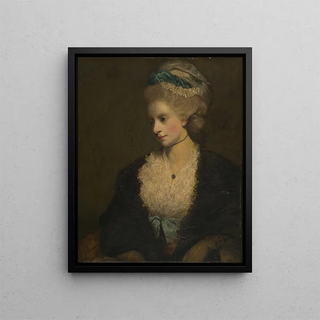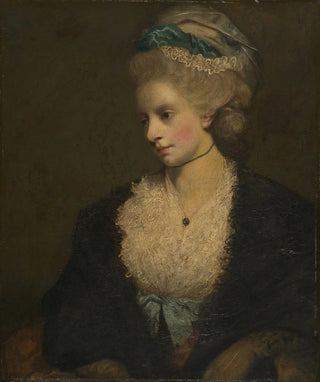Art print | Théophilie Gwatkin - Sir Joshua Reynolds


View from behind

Frame (optional)
In the fascinating world of art history, some works stand out for their ability to transcend time and capture the essence of their era. The Théophilie Gwatkin art print by Sir Joshua Reynolds is a perfect example. This piece, which illustrates Reynolds' unparalleled talent, bears witness to a time when portrait painting was at its peak. Immersing oneself in this work, the viewer is immediately transported to the refined universe of the 18th century, where nobility and aristocracy were depicted with unmatched elegance. Reynolds' art is not limited to simple representation; it is a celebration of personality and identity, a quest for immortality through image.
Style and uniqueness of the work
Reynolds' style is characterized by an exceptional mastery of light and color, which confer a striking depth and vitality to his subjects. In this art print, each brushstroke seems to tell a story, with every shadow and reflection adding an extra dimension to the composition. The artist manages to create a harmonious balance between realism and idealization, offering a vision that is both faithful and beautified of his models. The sumptuous drapery, graceful poses, and delicate expressions testify to meticulous attention to detail, while conveying a certain grandeur. Reynolds' ability to capture the soul of his subjects, while placing them in rich narrative contexts, makes this work a true masterpiece.
The artist and his influence
Sir Joshua Reynolds, an emblematic figure of British portraiture, left a mark on art history through his innovative approach and commitment to excellence. As the first president of the Royal Academy of Arts, he played a crucial role in establishing academic standards for painting in Great Britain. His influence extends far beyond his era, inspiring many artists across the centuries. Reynolds managed to blend tradition and modernity, integrating elements of classicism while opening up to new ideas of his time. His works, often imbued with romanticism and sensitivity, continue to fascinate and provoke thought among enthusiasts.

Matte finish

View from behind

Frame (optional)
In the fascinating world of art history, some works stand out for their ability to transcend time and capture the essence of their era. The Théophilie Gwatkin art print by Sir Joshua Reynolds is a perfect example. This piece, which illustrates Reynolds' unparalleled talent, bears witness to a time when portrait painting was at its peak. Immersing oneself in this work, the viewer is immediately transported to the refined universe of the 18th century, where nobility and aristocracy were depicted with unmatched elegance. Reynolds' art is not limited to simple representation; it is a celebration of personality and identity, a quest for immortality through image.
Style and uniqueness of the work
Reynolds' style is characterized by an exceptional mastery of light and color, which confer a striking depth and vitality to his subjects. In this art print, each brushstroke seems to tell a story, with every shadow and reflection adding an extra dimension to the composition. The artist manages to create a harmonious balance between realism and idealization, offering a vision that is both faithful and beautified of his models. The sumptuous drapery, graceful poses, and delicate expressions testify to meticulous attention to detail, while conveying a certain grandeur. Reynolds' ability to capture the soul of his subjects, while placing them in rich narrative contexts, makes this work a true masterpiece.
The artist and his influence
Sir Joshua Reynolds, an emblematic figure of British portraiture, left a mark on art history through his innovative approach and commitment to excellence. As the first president of the Royal Academy of Arts, he played a crucial role in establishing academic standards for painting in Great Britain. His influence extends far beyond his era, inspiring many artists across the centuries. Reynolds managed to blend tradition and modernity, integrating elements of classicism while opening up to new ideas of his time. His works, often imbued with romanticism and sensitivity, continue to fascinate and provoke thought among enthusiasts.






